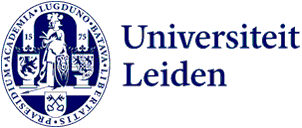
Archaeologist Alejandra Roche Recinos investigates ancient immigration in Southern Guatemala
In June 2024 the Faculty of Archaeology welcomed a new Assistant Professor. Dr Alejandra Roche Recinos, originally from Guatemala, will strengthen the Faculty’s expertise on the archaeology of Central America. ‘I want to explore the lesser known archaeology of Southern Guatemala.’
Excited to get back into archaeology
After finishing her Bachelor’s degree in Archaeology in Guatemala, Alejandra Roche Recinos moved to the United States to complete her training. ‘I did my Master’s and PhD at Brown University in the Anthropology department. After graduation I worked in teaching for three years. A very nice experience, but this did not give me a lot of time for research. Then I saw the job opening at the Faculty of Archaeology in Leiden and I decided to apply. I’m excited to get back to research and back into archaeology.’

Interregional interactions
The North of Guatemala is known for extensive Classic Maya sites, from some 2000 years ago. Yet Roche Recinos’ primary research topic lies on the Pacific South Coast. ‘I am trying to start a project there and explore the lesser known archaeology of this region. There are archaeological settlements that fit the term Maya at some point during the Classic period, but then a migration of people coming from other parts of Mexico seems to occur.’ There seems to be an interaction going on with the large urban centre of Teotihuacan, in Central Mexico.

Mix of styles
To explore this connection, Roche Recinos aims to study the site of Río Seco in the south of Guatemala, together with a colleague from The University of Texas at Austin. ‘In this site pottery seems to indicate a mix of central Mexican and local styles. So the question is whether there was direct large-scale immigration, or whether there were small enclaves set to control resources. Or was it an attempt by the local population to link themselves to this powerful city?’ The south coast of Mesoamerica is an agriculturally rich region, for example for the cultivation of cacao, so it might have been an interesting area for an imperial power like Teotihuacan. ‘It also forms a corridor for trade routes along the coast. So it is a very important area.’
Plantations
The site in question has only partially been explored, the first time back in the late 1960’s. ‘The American Mayanist Edwin Shook investigated the site, and most of what we know is from his diaries. Sadly, this area of the Pacific Coast is a perfect land for sugar cane and banana plantations. A lot of sites have already been destroyed by intensive farming.’
In 2012 the site was revisited for a small investigation project. ‘A few excavations were done around some of the bigger platforms and pyramid constructions. Findings range from burials to a lot of ceramics that were also linked with Teotihuacan. No tests were done at the time, so that will be one of my goals: for example strontium analysis of the human skeletal materials to ascertain if we are talking about a local population or people migrating from central Mexico.

Funding
Before a research project can be launched, however, Roche Recinos will first need funding. ‘We are starting to apply for grants now, and hopefully we can start our field season in the summer of 2025. We want to document the site as much as possible, before it is completely destroyed by the plantations.’
Introduction to Mesoamerican archaeology
Come September, Roche Recinos will also start to give classes in Leiden, like an introduction to Mesoamerican archaeology. “Later on I will give a lecture on the Maya. I was told there would be a lot of interest in this topic. I was also asked to give a few lectures in the Material Studies course, about obsidian. It’s been a while since I’ve been able to teach archaeology within an archaeology department and I am looking forward to it.’
